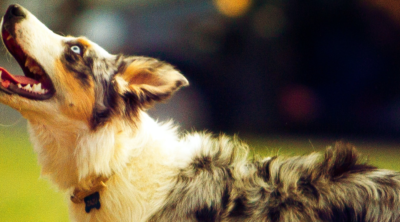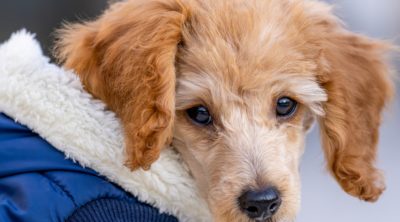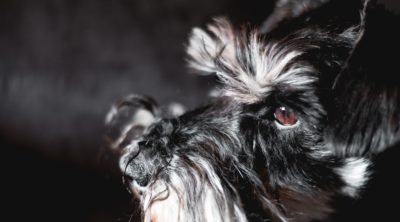Did You Know?
The Australian Cattle Dog is in the top 10 in terms of intelligence and trainability.
The Australian Cattle Dog is also known as the Australian Heeler, Blue Heeler, the Queensland Heeler, and the Red Heeler. It is a herding dog that had been developed in Australia to control cattle. It loves to run around and always have an activity at hand. Given below are some interesting facts about the Blue Heeler.
History
The precursors to the modern Australian Cattle Dog were first introduced by an Englishman, Thomas Simpson Hall in around 1840. Hall’s family had numerous cattle stations spread over many areas, and he needed to herd thousands of cattle over many miles every day. The Australian dogs were incapable of achieving this task. The colonial dogs, known as Smithfields, were not very useful either. They belonged to breeds designed to herd sheep over short distances. Hall tried to remedy this problem by importing several cattle-droving dogs from his home county of Northumberland. After having limited success with the British breeds, he then bred the imported dogs with an Australian wild dog breed known as the dingo. The resulting breed served Hall well until his death in 1870. Hall had not let others use these dogs (known as Halls Heelers), since they gave him a clear advantage in his trade.
After Hall’s death, his family’s cattle stations and property were auctioned off, and so were the Heelers. They could now be used by other people. These dogs were bred with Bull Terriers (to make them more tenacious), Dalmatians (to make them more loyal and affectionate towards their owners), and Kelpies (to increase their endurance and herding ability). The terrier strain was phased out due to the dogs’ aggressiveness towards the cattle. Instead of just nipping at the heels of the cattle in order to direct them, this strain tended to latch on to the heels, sticking to the terrier’s breeding as a hunting dog. The Kelpie strain was ideally suited to the hot, harsh climate of Australia, and was thus propagated extensively. Modern Australian Cattle Dogs are a variable mixture of Collies, dingoes, Dalmatians, Kelpies, and to some extent, Bull Terriers.
Appearance
The Blue Heeler has a compact body that is sturdy and has well-developed muscles. This body structure gives the dog agility and strength. The body should be slightly longer than it is tall. The eyes of this dog are dark-brown in color and ovular-shaped. The skull is broad. The ears are wide-set, small to medium-sized, and must be upright when the dog is alert. The muzzle is medium-sized. The tail is set neither too high nor too low, and is slightly curved.
Physical Description: Males are 18 to 20 inches (45 to 50 cm) tall at the withers, whereas females are 17 to 19 inches (43 to 48 cm) tall. The appropriate weight is between 33 to 50 pounds (15 to 22 kg). This breed has a double coat that is smooth, with a thick undercoat.
Coat Color: Coat colors are blue-speckled, blue-mottled, or blue, which may have white, black, or tan markings, and red-speckled or red-mottled. Puppies are white when they are born, and they obtain their color as they grow.
Temperament
This breed is independent, although it can socialize with other dogs if taught from an early age. The Blue Heeler is an independent, intelligent, and hard-working dog. Due to its sharp and alert mind and high levels of energy, it needs to be engaged in some task and needs to be given a job to do. It needs mental and physical activity and does great with clicker training and positive reinforcement training. A bored dog may resort to barking, and may even experience behavior problems.
Personality Traits: This breed can be very loyal, courageous, and affectionate towards its owners.Often called a “velcro” dog, it tends to become attached to it’s person. It is naturally cautious by nature towards strangers, so always be sure to socialize it right from the start. As it is a herding dog, it has a tendency to nip at the heels of people and herd them, particularly small kids, as they run around a lot. This tendency can also be kept in control with good positive reinforcement training. Get this breed only if you can keep it engaged and busy most of the time; if you want a dog that will be sitting around most of the time, then this breed is definitely the wrong choice.
Training
This is a highly intelligent breed that learns things very quickly. However, while training your Blue Heeler, make sure that you do not use a very strict or heavy-handed approach. Cattle dogs do well with force free, positive reinforcement training.
› Training must be done in a gentle and friendly manner.
› Ensure that there is a consistency in the training.
› The best way to ensure that your dog learns properly is for one person to begin with the training, and for other family members to include themselves as well so he learns to generalize behaviors .
Exercise and Size of the House
This breed requires a lot of exercise. A short stroll and spending some time in the park playing fetch will not suffice. It needs long, brisk walks. Jogs are better, and this dog makes an excellent jogging companion. It is not suited for apartment living; rather it needs a big yard to run around. It does better in a rural setting than in a city or urban area.
Grooming
The coat of this dog protects it from both hot and cold weather. The coat is easy to maintain and requires only occasional grooming with a bristle brush; one with strong bristles, not soft ones. It is recommended not to bathe this dog unless it is absolutely necessary. Shedding occurs twice a year.
Health
The Blue Heeler is susceptible to health problems like hip dysplasia, infertility, pyometra, elbow dysplasia, arthritis, blindness, and progressive retinal atrophy. Dogs with merle coats carry recessive piebald alleles that give the coat the white coloration; these alleles can result in congenital hereditary deafness in the dog. The life expectancy of this breed is 11 to 13 years.
The Australian Cattle Dog is a very enjoyable dog to have around. If you active and are willing to provide your pet with plenty of exercise and mental stimulation, this is the perfect breed for you.








